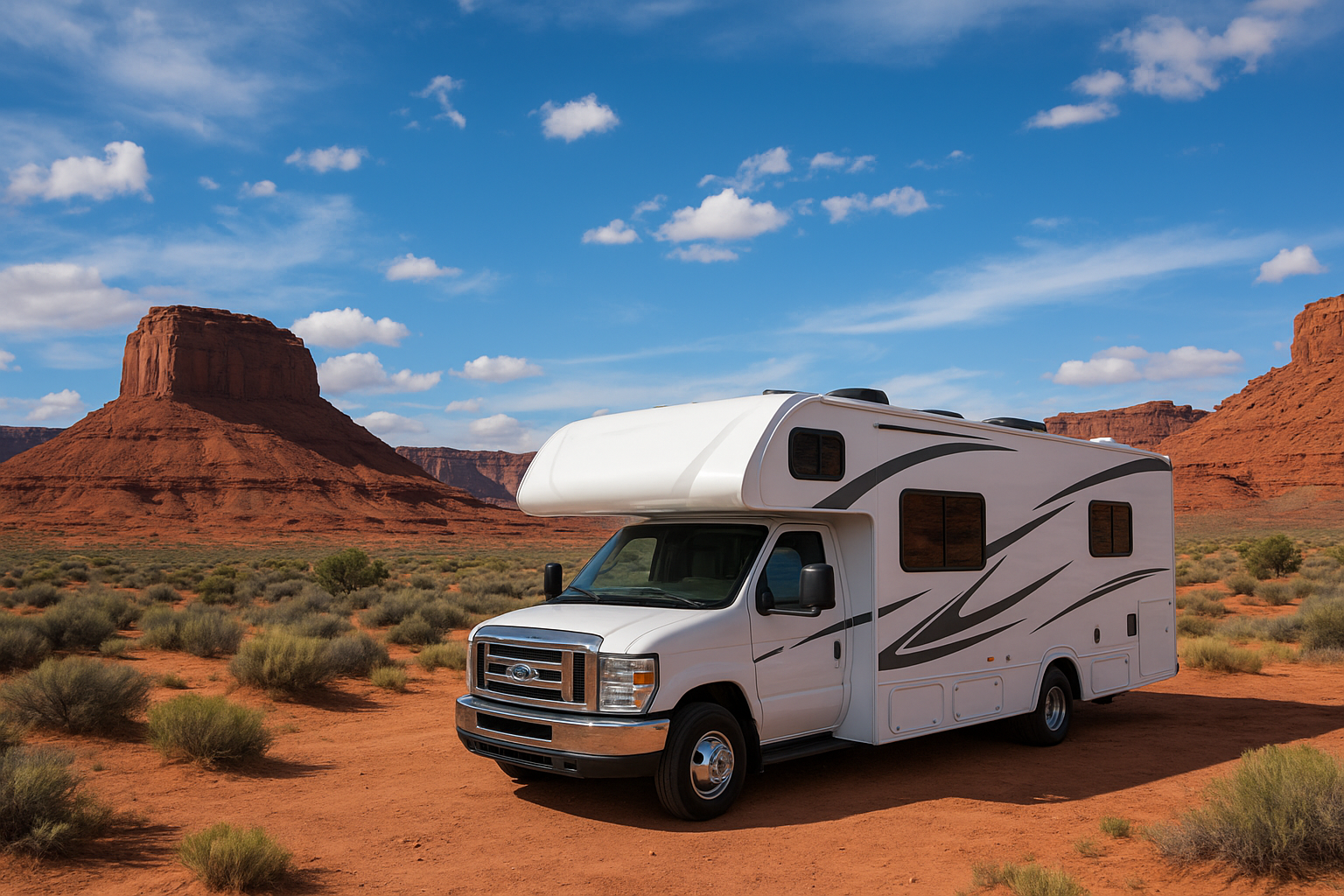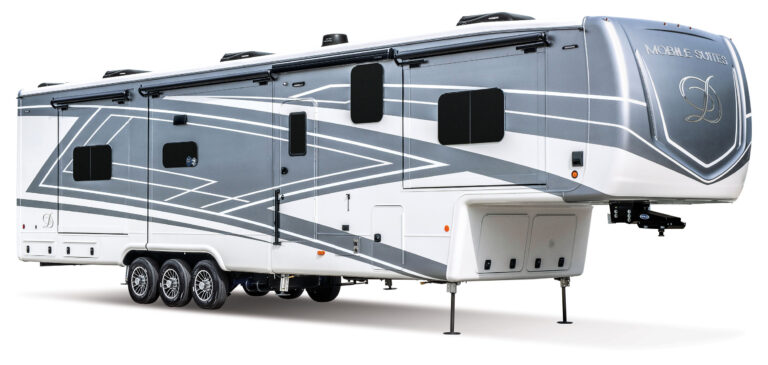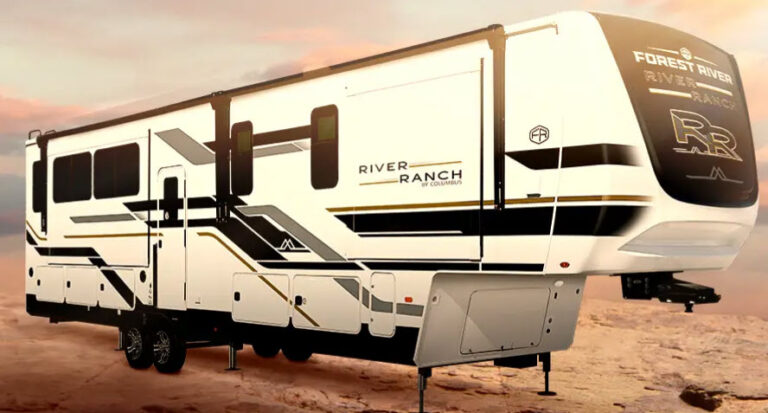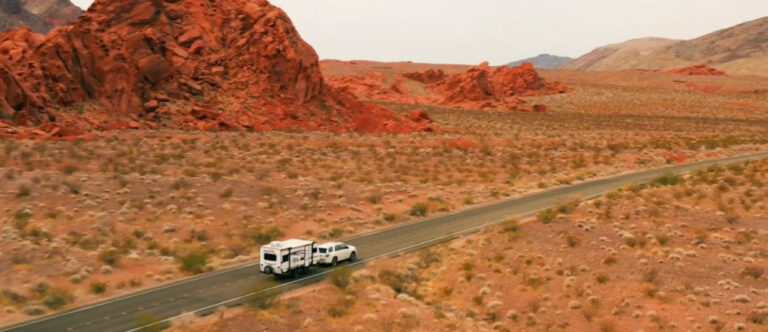Full-Time RV Living Guide – How to Make the Road Your Home
Introduction – What Does Full-Time RV Living Really Mean?
Full-time RV living means turning your recreational vehicle into a permanent residence and making the road your address. It’s an alternative lifestyle built on freedom, flexibility, and simplicity – where travel replaces traditional housing and adventure shapes your daily life.
According to U.S. Census and industry data, over 342,000 Americans live full-time in RVs, boats, or vans, representing a 41% increase since 2019. Broader estimates that include seasonal and semi-permanent residents place the number closer to one million full-time RVers across the country. Meanwhile, more than 11 million U.S. households own an RV, the highest number recorded to date.
Who chooses this life?
- Retirees seeking comfort and affordability in their travels
- Digital nomads working remotely with mobile internet setups
- Young families homeschooling children while exploring the country
- Minimalists and adventurers downsizing in search of purpose
The rise of remote work, soaring housing costs, and eco-conscious habits are fueling this movement. As Progressive’s 2024 report notes, millennial professionals and parents now make up a large portion of RV residents, and half of all full-timers are under 45. America’s roads are becoming not just routes, but neighborhoods.
Pros and Cons of Full-Time RV Living
The Benefits
Freedom without borders: Living in an RV gives unparalleled mobility – wake up by the ocean one week, in the mountains the next. Full-timers often describe this as the essence of “living large with less.”
Lower living costs: The average monthly expenses for full-time RVers range between $1,400 and $3,000, depending on travel speed, fuel, and campground choices. Compared to urban rent or mortgage costs, this lifestyle can be dramatically cheaper.
Connection with nature and community: RV living fosters a closer relationship with natural surroundings and a network of like-minded travelers. Campground friendships often evolve into lifelong bonds, and shared experiences – from fireside cooking to hiking – promote a sense of belonging rarely found in city life.
The Challenges
Daily maintenance: Managing water tanks, propane, electrical systems, and tire care becomes part of the daily routine. Regular inspections prevent breakdowns but require time and know-how.
Connectivity on the road: Reliable WiFi isn’t always available. Even with equipment like Starlink or mobile hotspots, rural areas can challenge digital nomads.
Financial and insurance management: RV insurance, vehicle maintenance, and campground fees must be budgeted carefully – often alongside vehicle registration and domicile taxes.
Weather extremes: Living in an RV means facing heat waves in Arizona or freezing nights in Montana. Proper insulation, weatherproofing, and planning are essential to staying comfortable year-round.
Choosing the Right RV for Full-Time Living
Selecting an RV is one of the biggest decisions in this lifestyle. The right model depends on travel style, family size, and budget. In 2025, RV prices range from $10,000 for a travel trailer to over $300,000 for a Class A motorhome.
Here’s a quick overview of the main RV types:
| RV Type | Price Range (2025) | Space & Comfort | Maintenance Level | Best For |
|---|---|---|---|---|
| Class A Motorhome | $100K–$300K+ | Luxurious, spacious | High | Full-time families, retirees |
| Class B Camper Van | $80K–$150K | Compact, agile | Low | Solo travelers, couples |
| Class C Motorhome | $70K–$140K | Balanced comfort | Medium | Families on the move |
| Fifth Wheel | $30K–$100K | Residential layout | Medium–high | Pickup truck owners |
| Travel Trailer | $10K–$60K | Varies widely | Medium | Budget-conscious travelers |
What to inspect before buying:
- Structural integrity and water damage
- Vehicle weight and towing capacity
- Storage space and insulation quality
- Electrical and solar readiness
- Maintenance history
Many full-timers recommend starting with a pre-owned RV to learn what works before investing in a customized rig.
Budgeting for Full-Time RV Life
Living on wheels doesn’t mean living without a plan. On average, monthly full-time RV costs include:
- Campground fees: $500–$1,200
- Fuel: $300–$800 (depending on travel frequency)
- Insurance & registration: $100–$250
- Maintenance: $100–$300
- Internet & phone: $75–$150
- Food: $400–$800
Sample Monthly Budget (2025):
| Category | Cost (USD) |
|---|---|
| Campgrounds | $900 |
| Fuel | $600 |
| Insurance | $150 |
| Maintenance | $150 |
| Internet | $100 |
| Food | $600 |
| Miscellaneous | $200 |
| Total | $2,700 |
Money-saving tips:
- Join memberships like Escapees RV Club, Passport America, or Harvest Hosts for discounted camping.
- Travel slower: fewer miles mean lower gas and maintenance costs.
- Use solar panels and propane efficiently.
- Consider boondocking (camping off-grid on BLM land) to reduce campground fees.
Legal & Logistics – Registration, Insurance, and Domicile
When living full-time on the road, selecting your domicile state – your legal residence for taxes, voting, and registration — is crucial. The top choices are Texas, Florida, and South Dakota, known for low taxes and RV-friendly regulations.
Key considerations:
- No or low income tax (TX, FL, SD)
- Simplified vehicle registration
- Access to mail-forwarding services for addresses
Insurance and Licensing:
RV insurance combines aspects of vehicle and homeowner policies. Ensure policies cover full-time living, personal belongings, and liability. Requirements vary by state, so read policies carefully.
For mail and banking, full-timers rely on digital banking and virtual addresses. Services like Escapees and America’s Mailbox handle mail forwarding and domicile setup.
Staying Connected – Internet, Work, and Remote Living
Reliable internet is the backbone of remote RV life. Full-timers often use a combination of:
- Starlink satellite internet for rural coverage
- Mobile hotspots using major carriers like Verizon, AT&T, or T-Mobile
- Campground WiFi as backup (often slower)
Work-from-anywhere setups typically include VPNs, solar panels, and battery management apps to ensure power efficiency. For digital nomads, WiFi management can determine route planning – ensuring access before deadlines or virtual meetings.
Finding Campgrounds & Long-Term Parking
Campgrounds across the U.S. range from luxury RV resorts to free wilderness sites. The U.S. has over 16,000 public and private RV parks, covering coastal, desert, and forest regions.
Types of stays:
- RV Parks: Full hookups, amenities, social atmosphere
- Boondocking / BLM Land: Free, self-sufficient camping in public lands
- National & State Parks: Scenic, limited size availability
- Long-term stays: Monthly discounts or seasonal sites
Resources to find spots:
- RVLife, Campendium, Harvest Hosts, and AllStays apps
- Membership programs for discounts
- Your site’s own RV Parks Directory for regional listings
Tips for long-term convenience:
- Ask for monthly rates (often 30–50% cheaper)
- Reserve early for national parks
- Alternate between paid sites and free stays to balance comfort and cost
Full-Time RV Living with Family or Pets
Families embracing this lifestyle cite stronger bonds and educational enrichment as key benefits. Remote schooling is facilitated through online programs and homeschooling resources like Khan Academy, Outschool, or Time4Learning.
RV life with pets:
Over 50% of RV owners bring pets on the road. Make sure to check park pet policies, keep vaccination records updated, and provide plenty of shade and exercise opportunities. Many modern RVs offer pet-friendly floorplans with easy-clean flooring and space for crates.
RV Maintenance and Upkeep on the Road
Preventive maintenance keeps your rig road-ready and safe.
Core systems to monitor:
- Water and sewer: Regularly empty tanks, sanitize hoses
- Electric and gas: Inspect cords, fuses, and detect propane leaks
- Tires: Check pressure and wear before every trip
- Roof and seals: Inspect monthly for leaks
Common repairs: Leaky fittings, battery issues, and brakes.
Monthly checklist:
- Test smoke/CO alarms
- Flush tanks
- Lubricate hinges and slides
- Update maintenance records
Community and Lifestyle
RV living isn’t just travel – it’s a community movement. Online groups and forums, such as RVillage, Escapees, and Facebook groups, foster support networks and shared advice.
In-person events like rallies and meetups offer chances to connect in real life. Wellness, routine, and fitness are central for long-term sustainability. Simple practices – walking trails, outdoor yoga, and fresh cooking – keep both body and mind balanced on the road.
Safety and Emergency Preparedness
Safety must always come first.
Insurance and healthcare: Choose a plan that covers out-of-state care or consider travel health insurance for flexibility. Some full-timers use nationwide providers such as BlueCross and Liberty HealthShare.
Essential emergency gear:
- First aid kit
- Fire extinguisher, tire repair kit, jumper cables
- Weather radio, GPS tracker
- Tow coverage (Good Sam, AAA RV)
Emergency planning:
Install weather alert apps, maintain clear escape routes, and ensure multiple power and water backups for extreme conditions.
Conclusion – Is Full-Time RV Living Right for You?
Full-time RV living offers unparalleled freedom but demands adaptability, organization, and self-reliance. The lifestyle rewards those seeking simplicity, exploration, and community – but it’s not a one-size-fits-all path.
Pros: Lower costs, adventure, flexibility, connection
Cons: Maintenance, connectivity challenges, variable weather
For beginners, start by renting an RV to test the waters before committing. Then explore deeper resources like RV Maintenance Essentials, RV Rental Guide, or your RV Parks Directory to plan responsibly.
Life on wheels can be both liberating and grounding – your home just happens to have a different view every day.







